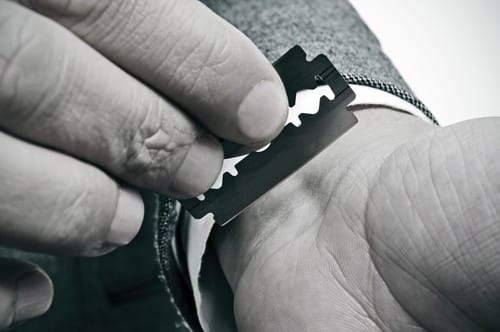Depressive disorders affect well over 13 percent of teens in the US, representing a growing number of adolescents growing up with periods of abnormally low mood and fatigue. Understanding why depression occurs, what it looks like, and how it can be treated is important for any modern parent. While therapists and mental health professionals are critical partners when helping your teen face their struggles, a parent’s role is still the most important when it comes to supporting and helping your teenager with depression, as they rise to the challenges of adulthood.
Understand How to Help Your Teenager with Depression
Depression, or major depressive disorder, is one of the most commonly diagnosed mood disorders and mental health issues in the world. It is characterized by a persistently low mood, and feelings of physical and mental fatigue, lasting at least two weeks. Depressive episodes aren’t always triggered by loss or trauma, but can be exacerbated by past and ongoing stressors.
Many teenagers who struggle with depression cannot clearly articulate why they feel the way they do and might not even be able to pinpoint a cause or date of onset – the feeling simply starts and doesn’t go away for a long time. Separating depression from normal sadness or the typical growing pains of adolescence can be difficult, but there are a few telltale signs. Depressive episodes are always more severe than what the average teen goes through, as well as long-lasting. Some common elements in depression that might not always be present in regular sadness include:
- loss of energy and willingness to engage in old hobbies or fun activities.
- loss of joy or happiness (anhedonia).
- unexplained recurring aches and pains.
- a sharp decline or increase in appetite, and associated weight loss/gain.
- trouble falling asleep, and a hard time waking up.
Another common element is the feeling of hopelessness. A teen with depression will, more than just melodramatically, assume that they’re dead weight to others, or that they are unloved or unwanted. They will feel guilty for minor mistakes and might talk about feelings of worthlessness. Some more severe symptoms sometimes associated with long-term depression include signs of self-harm and suicidal ideation, both of which require the immediate attention of a mental health professional.
Depression Comes in Many Forms
Not all types of depression are the same. Alongside major depressive disorder, some of the most common types of depression include persistent depression, seasonal affective disorder, and premenstrual dysphoric disorder. Persistent depression is a form of depression with milder symptoms, but a much longer duration. A teen who struggles with persistent depression might not have intense bouts of depression over multiple years but will feel consistently low mood and low energy for at least two years. Sometimes, persistent depression can fly under the radar as a teen simply becomes less outgoing and appears more withdrawn or distant with age, while struggling with more fatigue and less general happiness.
It’s important to talk with your teen and understand how they’re feeling on a regular basis. Seasonal affective disorder is a type of depression that is usually triggered by the shift in weather as things approach winter. Also known as the winter blues, it is a legitimate mental health disorder characterized by a crashing mood during the winter months. Some of it is attributable to holiday stressors, and another element may be a lack of endogenous vitamin D from sunlight. Among other treatments like therapy and medication, seasonal affective disorder can be treated with phototherapy, utilizing a special UV lamp in the morning hours.
Premenstrual dysphoric disorder is a more severe form of premenstrual syndrome (PMS) characterized by a severe drop in mood during the week or two before a woman’s period starts. It is also characterized by a sharp increase in anxiety and irritability, and often requires medication. Alongside PMDD, adolescent depression can also be triggered by other physical conditions, including thyroid conditions, abnormal growths, and chronic pain disorders.
How Depression Is Treated
Depression is treated with two concurrent elements: medication and therapy. Some types of depression are treated with other modalities – such as phototherapy, birth control, and hormone treatments – but the first-line treatment for most signs of adolescent depression are antidepressants and cognitive behavioral therapy. Antidepressants are a wide-ranging class of drugs, usually involving selective serotonin reuptake inhibitors, as well as alternative and older antidepressants.
Each class of antidepressants functions a little differently, and among them, there are many different branded formulations that achieve the same effect through different pathways. The general idea with any antidepressant, however, is to correct or compensate for an issue in a teen’s chemical neurotransmission, such as by making serotonin more readily available in the brain. However, therapy is just as important as medication. A teen’s treatment will always depend on the severity and nature of their symptoms, as well as their diagnosis and concurrent health issues, mental or physical.
Therapy is the most well-tolerated treatment of all, involving two or more people having a guided and productive conversation. In cognitive-behavioral therapy, the most common type of talk therapy, a therapist helps a teen identify and differentiate unwanted or misguided thoughts, and actively work on introducing healthier, more positive thoughts, thereby affecting and altering their behavior for the better as well. This type of therapy works on the principle that thoughts guide actions, and that we can work on changing the way we think by becoming more aware of our thought patterns and the beliefs we hold about ourselves.
Support Your Teenager with Depression
One of the most important elements of support is support for a teen’s treatment. Parents should work with their teen’s healthcare providers to help them stay on track with their medication and appointments, and encourage them to work on lessons learned in therapy, from trying out new and different coping mechanisms, to encourage them to pick up old interests and hobbies and do things they enjoy. Building a teen’s self-esteem starts with helping them get good at something they like doing, and encouraging them to pursue it. Support also means being patient. It takes time for both medication and therapy to begin working, and it can take time for a teen to internalize what they’ve learned.
Depressive symptoms can be reduced over time through a consistent and individualized treatment approach, and it’s more effective the earlier depression is diagnosed and treated. If your teen is showing telltale signs of a depressive episode, don’t be afraid to talk to them about it. They may have been waiting for the right opportunity to open up, or don’t know how or where to ask for help. They might not know why they feel the way they do, or are afraid of being labeled. Work with them to get them the help they need – and learn more about how you can support them.









